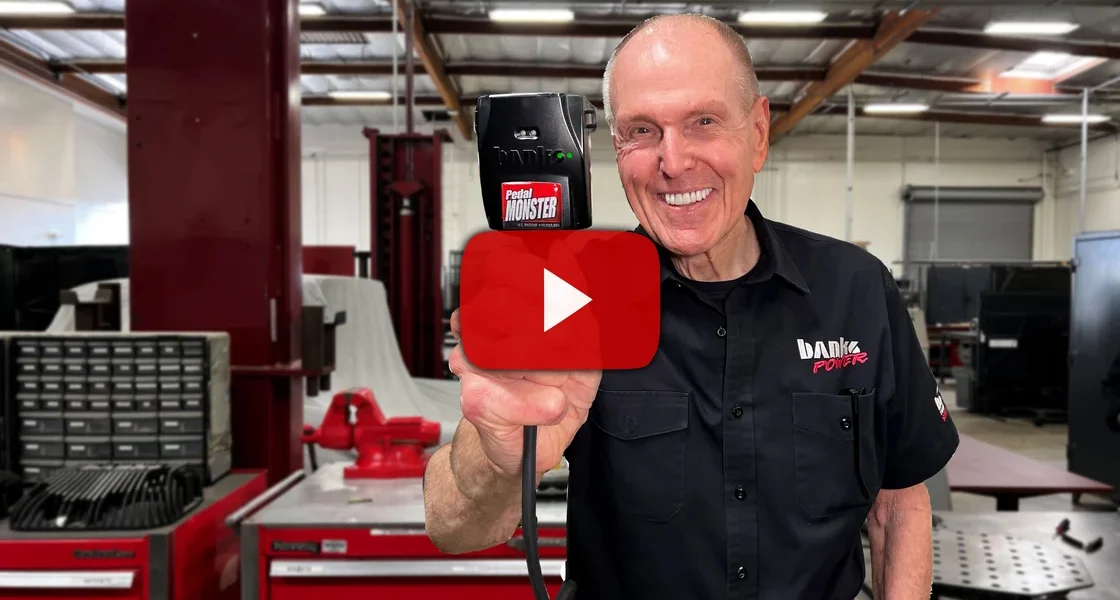PedalMonster Throttle Controller: Throttle Science Perfected
There a dozens of throttle response controllers on the market. If you’re an automotive enthusiast, chance are you’ve seen one of their social media ads. Look closely at their specs and you’ll find they’re all the same. They have crude throttle response curves which aren’t curves at all. They’re nothing more than three points on a graph. The result is notchy, unpredictable pedal feel that makes your transmission shift-happy. They do this because it’s cheap and easy. The smoother the pedal curve, the more points you need on the graph. The more points you have on the graph, the more computing power you need. No matter how many sensitivity levels they offer, they all feel like a light switch. Once you get over the notch in the middle, the rest of the pedal’s range of motion is dead—like you stepped in a bucket of mud.

After driving with all of our major competitors, we knew that in order to feel natural, we needed hundreds of points along each sensitivity level. This would give PedalMonster the same response as an old school cable actuated throttle—smooth and predictable. Then we layer in our speed-based Tip-In Control. This setting allows you to modify each of 30 City, Sport, and Track settings, tapering off added sensitivity below 10 mph. This feature is perfect for preventing wheel spin on slick surfaces, racing, or towing so you don’t jerk the trailer around leaving a stoplight. PedalMonster is the only throttle controller with Tip-In Control because it’s the only one connected via the vehicle’s onboard diagnostics bus. With this digital umbilical chord to the vehicle’s ECM, PedalMonster knows your year, make, model, transmission type, speed, and gear. It allows you to tune your pedal according to all of these parameters. Mic drop.
Full Video Transcript
00:00 before we designed the Banks Pedal Monster I had the guys go out and buy every throttle controller on the market we fingerprinted them and lo and behold everyone had a graph that looks just like this their throttle response curves are not curves they’re just two straight
00:19 lines joining three points on a graph they’re notchy unpredictable and make your transmission shift happy let me show you what throttle curves should look like you’ll notice right off there’s no sudden transitions there’s no straight line it’s beautiful gradual predictable each mode has 10 different
00:40 contours within the mode our 30 base curves feel natural no matter what position your pedal is in but here’s where I blow your mind pedal Monster is connected to your onboard diagnostics port and knows the vehicle’s speed it uses this data to allow you to control
00:58 tipin which is your offthe-line throttle response first select the sensitivity level say city 5 or sport 2 then you’ll use your tip in setting to smoothly roll in that sensitivity as the vehicle exceeds 10 mph this is awesome for preventing wheel spin on slick surfaces
01:17 or when you’re racing and when you’re towing you won’t jerk your trailer around five levels of tip-in control allow you to modify the 30 city sport and track modes giving you 150 levels of throttle response and because you can select your transmission type you have
01:36 150 levels for automatic transmission and 150 levels for manual transmission these contours feel smooth both to you and your transmission you want a pedal you can modulate you’re looking for curves like this if you’re doing any kind of high performance driving road
01:55 racing drifting whatever you’re doing you’re looking for predictable throttle you don’t want a light switch on off on off on off we didn’t just casually draw some straight lines i drove them for weeks mustangs Corvettes trucks diesels gasoline i mean everything stick shift automatic those
02:19 30 curves are silky smooth no matter what vehicle you’re in there is no more tunable throttle controller than a pedal monster
PedalMonster Throttle Sensitivity Booster
Banks Throttle Controllers Collection
In-Depth Review of PedalMonster
R&D: Banks PedalMonster Introduction

